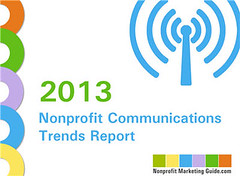| 2013 Trends Report Cover (Photo credit: kivilm) |
New York, Jun.5, stock investment .- This article originally appeared on StreetAuthority. These are truly days of wine and roses for stock market investors. After being knocked down in the dot-com bubble of the late 1990s and again during the financial crisis of 2008, long-term investors are being rewarded for their persistence and dedication as stocks surge higher, breaking record after record.
In fact, this bull market turned 4 years old in March and is showing no signs of letting up.
Historically, the average bull market has lasted 4 1/2 years. In and of itself, this means little; for instance, the 1990s bull market lasted nearly seven years without a major correction.
But according to my research, there are three distinct signs that make me think this bull market may be ending soon. Here's what you need to know.
1. Irrational Exuberance
This term is best known for its use by former Federal Reserve Chairman Alan Greenspan during the dot-com bubble of the late '90s.
This means that investor excitement has driven stock prices higher than justified by fundamental support. While this was certainly true during the dot-com boom, it isn't as true today.
Companies are posting strong numbers, and the economy is thriving. However, it is important to note that the primary cause of the today's bull market is unfettered Federal Reserve easing measures. Questions like "How much is too much?" and "How long can the Fed keep pumping out money to support the economy?" make me think that the Fed itself may be acting with irrationally exuberance -- and a sharp pullback could occur.
Remember, pullbacks of 10% are common in bull markets. That means 1,500-plus points in the Dow Jones industrial average (DJIA). Be ready.
In addition, it takes a full 25% drop from the highs to signal a bear market has started. This equates to a 3,750-point drop in the Dow. Even if this occurs, it leaves the Dow well above the psychologically critical 10,000 level.
2. Global Uncertainty
We live in a connected world. The debt crisis in Europe is far from over, further austerity measures could affect the U.S. economy, and a slowing growth rate in China may eventually hurt U.S. exports.
3. Fed Changes
While the Federal Reserve is the prime driver behind the bull market, it could easily shut off the faucet.
If the Fed increases interest rates or throttles back on the quantitative easing measures, stocks could plunge in response. While interest rate increases are not expected until the unemployment rate drops to 6.5%, the Fed may turn to other measurements to make its decision. All the Fed needs to think is that the economy is overheated and it will step in to increase rates.
Federal Reserve Chairman Ben Bernanke is stepping down in 2014. His replacement may have a different market view and pull back the reins on the easing measures. If this occurs in an unexpected way, be prepared for the largest stock single market plunge of the century.

Along with the three expected ways the bull market could be derailed, economic black swans could also end the good times.
A "black swan" event is one that is completely unexpected and has profound effects. (The 9/11 terrorist attacks are an example of such an event that had major effects on the economy.)

Risks to Consider: Remember, diversification is the key to success in the stock market. A well-diversified portfolio can weather most market storms and create solid profits during the good times.
Action to Take -- While the market appears technically to be topping out, anything can happen, and it's possible it could continue much higher. However, investors need to be mindful of these signals, which could portend a derailment of the bull market. Remember, declines of 10% or more are common bull market occurrences. ...

No comments:
Post a Comment